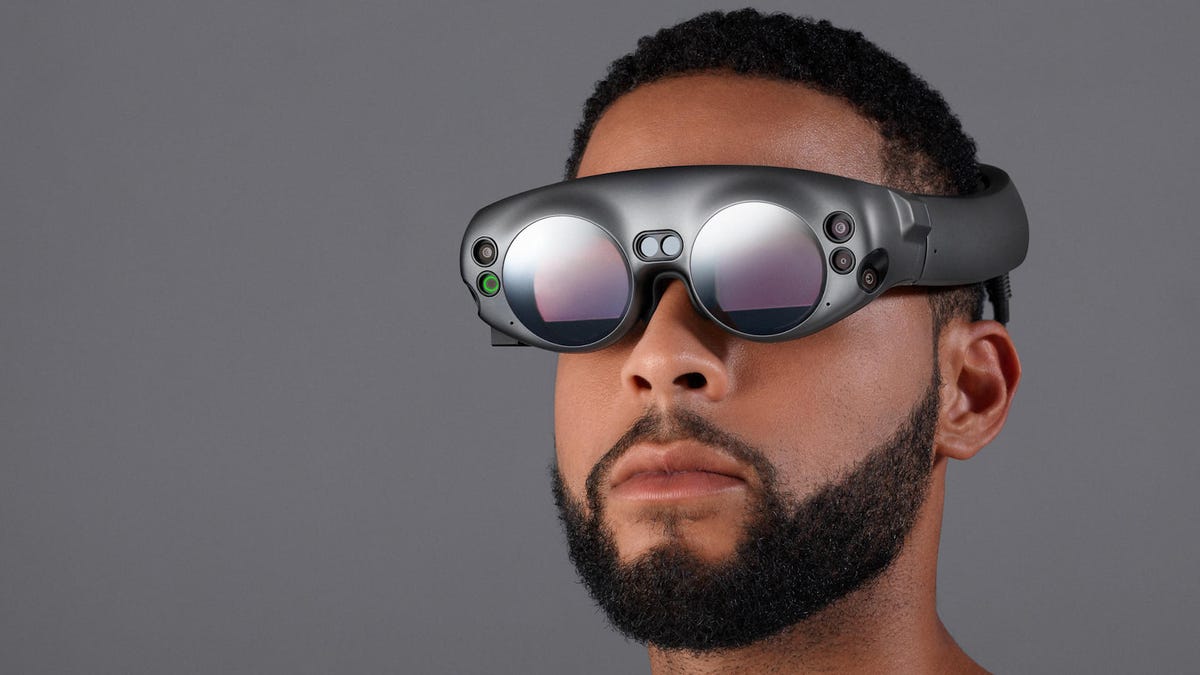Magic Leap set to bring mixed-reality tech to the mobile world
CEO Rony Abovitz says the secretive company will announce a mobile partnership with a "major" telecommunications company later this year.

Secretive mixed-reality startup Magic Leap is itching to go mobile.
Its ability to create the illusion of 3D objects in the world around you has garnered endless buzz, and the company is flush with more than $2 billion in funding from high-profile investors such as Google, Qualcomm and Warner Bros. It's now set to strike a partnership with a "major telco" later this year, founder and CEO Rony Abovitz said in an interview Tuesday.
Abovitz said the collaboration won't affect the company's first product, the mixed-reality headset Magic Leap One, but it will apply to later generations.
Magic Leap One is set to hit the market this year, but the company is also planning to develop multiple devices, including a mass-market one priced roughly around the cost of a high-end tablet or phone.
Magic Leap founder and CEO Rony Abovitz said the telco partnership won't impact the company's first product, Magic Leap One.
For Magic Leap, pinning down a mobile element for its mixed-reality universe could be critical in reaching wider adoption beyond deep-pocketed tech diehards. Mixed, augmented and virtual reality together make up buzzy category of technology that some companies, like Google and Facebook, believe will define the next era of computing.
If Magic Leap's mobile efforts follow the pattern of virtual-reality systems, a partnership with a telecommunications company could result in a device that's more accessible and affordable than Magic Leap One is expected to be.
Abovitz discussed the partnership on the sidelines of the Code Media conference in Huntington Beach, California. Earlier in the day, he announced a partnership with the NBA, with an eye toward producing experiences that let you watch a miniaturized arena of players running in front of you, with seven virtual screens showing the game at multiple angles.
"You'll see that in the next two years," he said during the conference.
Mobile hints
Magic Leap One will have some mobility built in, Abovitz said. It doesn't need to be tethered to a phone or computer to work, but you'll be able to pair it to your phone with technology such as Bluetooth.
A telco partnership hints at Magic Leap being serious about tackling the thorniness of taking mixed reality outdoors. By adding a cellular connection, the headset could potentially work outside and on its own, much like a connected smartwatch.
Abovitz said Magic Leap One -- ML1 in the company's shorthand -- is being designed to work best indoors, but the subsequent iteration will be suitable for indoor and outdoor use. The company wants to "get indoors right" first, he said.
Likewise, partnering with a big wireless provider could mean Magic Leap's products could eventually show up at thousands of carrier retail stores, giving consumers a convenient way to try out the products. One of the challenges of mixed- and virtual-reality products is that it's hard to get the value across without actually experiencing it for yourself.
Abovitz plans to announce battery life capabilities when the product is released. It can operate on a battery or plugged into a power source. Although you could wear it all day, he's not encouraging anyone to do that.
"Think about wearing big headphones. You're not really going to wear them all day," he said. "A two- to three-hour session is the target for ML1."
The Smartest Stuff: Innovators are thinking up new ways to make you, and the things around you, smarter.
Apple: See what's up with the tech giant as it readies new iPhones and more.

